I remember the first time I met someone who told me they tied flies but didn’t fish them. I was standing at the counter in a fly shop, waiting for the manager to tally the damage, when a kind man sitting in a well-worn chair struck up a conversation. The shop dog sat patiently by his side.
We chatted about dry flies and Regal vises as I laid down the credit card, signed my name and took the receipt for a tiny brown bag for which I’d paid too much.
When I asked the man if he had ever dropped a nymph off the Slate Drake Parachute we were talking about, he replied that he didn’t fish.
“Oh, I only tie flies.”
He said it with the flatness of someone who had seen the same confusion that came to my face on hundreds of others in the same fly shop.
“You mean, you don’t fish anymore?” I asked.
“Nah, I never really got into it,” the man said. He patted the fawn-colored Boxer on its head as he stood up. He straightened his sport coat, flattened his slacks and signaled for me to follow him a few steps over to the fly bins.
I remember wooden floorboards creaking as I stood beside the man who smelled like fragrant cedar. Everything about his attire and presentation was meticulous. He reached to the top row of flies and plucked three of the most perfect specimens I’d ever seen. Placing them in the palm of his hand, the dry flies hovered on their hackle tips. Nimble, they animated in a moderate breeze coming from the humming HVAC that I hadn’t noticed until then.
We spent a half hour together, and I knew in a few minutes that I’d met an artist. His name was Graham. His dog’s name was Charlie. He tied tens of thousands of flies for the shop every year, and he had never wet a line.

— — — — — —
Years later . . .
It was early June, eight-o-clock, on a perfectly cool evening with a good hatch of bugs in the air.
They were mayflies — what I thought of as late Sulphurs. The smallest of the season, these bugs had a predictable way of falling all at once in the kind of grand spinner fall that anglers tell stories about. It would begin an hour before dusk and continue into the dark — if you had the guts to hang around — and trout lost all measure of caution when these dead mayflies hit the water. I’ve seen spinner falls where worried trout would nose multiple bugs before sipping one down. But for whatever reason, the wild trout in this river, over these bugs, joyously gulped mouthfuls of spinners into the moonlight.
As I rounded the bend on an angler’s path I found the source of tobacco scent. I was about to meet Lincoln. He was perched on a tree stump made for sitting. He was smoking a cigar, watching and considering everything around him.
The path led me in front of the man, so I nodded as I passed, but I kept my head down.
“You’re not planning on fishing there are you?” He motioned to the flat water in front of him as I turned to reply.
“No, no. I’ll give you plenty of space,” I told him. “I can go up past the walking bridge if you like.”
“Oh, so you’ve been here before?” The man asked his second question with a lighter tone.
I nodded. “Sure I have.”
“Well, I’m Lincoln,” the man said, reaching out a leathery palm.
We shook hands, and Lincoln cracked a smile as he somewhat sheepishly told me that he’d thought I was going to jump into the water before the spinners fell.
“Years ago, the evening hatch was respected,” Lincoln told me. “My friends . . . We sat on these banks and waited for the rises. And then we fished.” He motioned to the sky but continued looking at me. “When those spinners started falling — that’s when we made our first cast.”
I nodded, and we paused in silence to watch the river pass.
“What fly will you fish tonight?” I asked.
When I spoke the question, Lincoln’s eyes brightened. He tilted his wide hat upward and peered at me over thick black glasses. Then he reached into a shirt pocket and brought out a small, clear-plastic Frabill box with no more than a half-dozen rows of foam. Enough light remained in the shaded canyon to see deer hair spinners, stand-up dry flies and emergers — all in perfect rows and all in three different colors. There were biot bodies, cut wings, calf tail fibers and split tails.
I thought of Graham and his dog, Boxer. And I knew I’d met another artist.
I sat on the stump beside Lincoln and listened to his gravely voice. He pointed out the intricacies of each fly. He spoke as a craftsman who loved his work. He told me that his brother still hunted birds — mostly to bring Lincoln the feathers — and how, years ago, he’d gotten all the hides he could ever want while trapping furs along this same river.
I marveled at the delicacy. I envied the patience and talent necessary to put such detail into a size #18 dry fly.
And then, I offended Lincoln . . .
“Do you think any of that really matters?” I asked.
Before I finished the sentence, I heard my clunky misstep. To someone like Lincoln, the artistry of the fly was as important as the trout that it might fool. But I had never grasped this concept until the moment those last words hit my tongue, and I saw Lincoln’s face fall flat.
“Of course it does,” he assured me in a whisper.
Lincoln’s disappointment hung heavy in the air, and he slowly closed the fly box lid before sliding it back into his shirt pocket. Lincoln’s gaze returned to the river, and he silently plucked the smoldering cigar from the log beside him. Two puffs, and I watched his cloud of smoke rise to meet the mayfly spinners.
“Well, Lincoln, it looks like those spinners are about ready to fall,” I said. I knew there was no recovering from my words, and an apology would have only piled onto the insult.
“I’m headed upstream for now. Hey, good luck, tonight.”
Lincoln nodded affirmation without taking his eyes from the water, and I walked away, along the narrow path.
— — — — — —
In the years since, I’ve met just one other angler like Graham. But I’ve met many more like Lincoln.
It’s easy to understand how tying flies makes you a better angler. And many fly fishermen take their passion for the river directly over to the vise. With that passion follows artistry. And for that kind of artist, what is wound around wire and bound to a hook comes with beauty . . . or there is no point.
One of the best tyers I’ve ever known would tie a dozen of the same fly and keep only two or three, stripping the rest with a razor blade to the bare hook. Why? He said he only fished the ones that had a soul.
I think Lincoln knew that the exquisite details built into his flies did not catch more trout. But it still mattered. That’s the fly tying artist at his best.
At worst, the fly tying artist begins to believe that his flies, and the elegant particulars therein, matter most — until he is sure that the right pattern can save every fishing trip.
Then again, maybe that’s not so bad after all.
Fish hard, friends.
READ: Troutbitten | Angler Types in Profile | Series
** Donate ** If you enjoy this article, please consider a donation. Your support is what keeps this Troutbitten project funded. Scroll below to find the Donate Button. And thank you.
Enjoy the day.
Domenick Swentosky
T R O U T B I T T E N
domenick@troutbitten.com



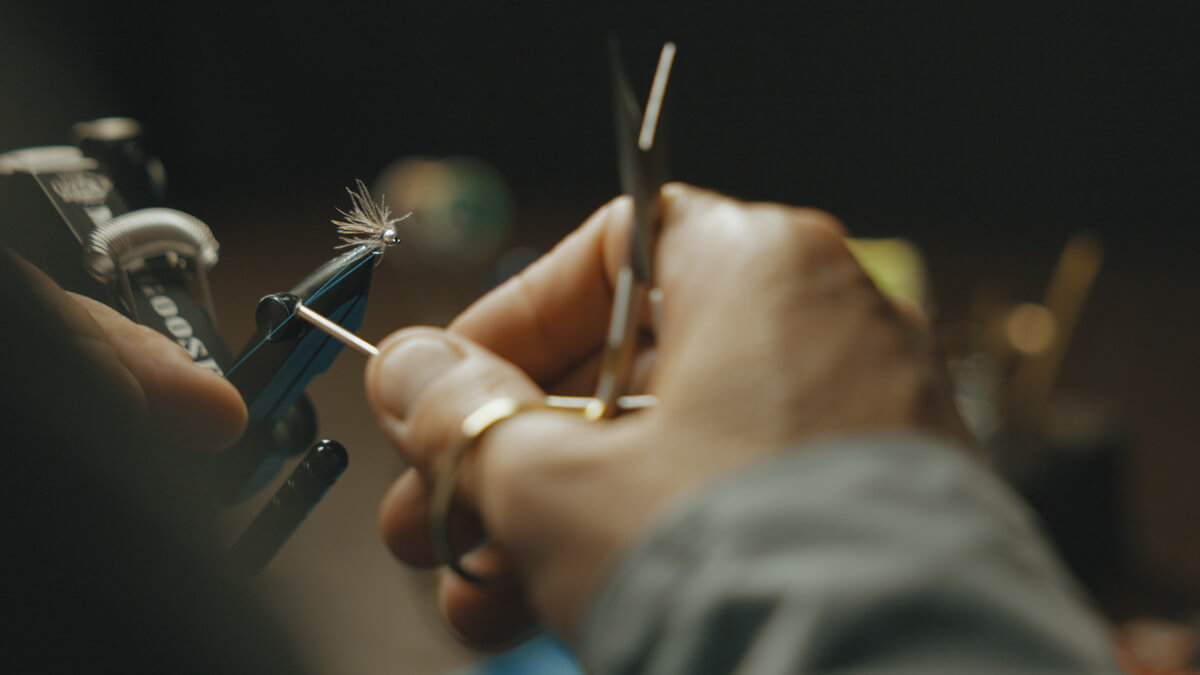
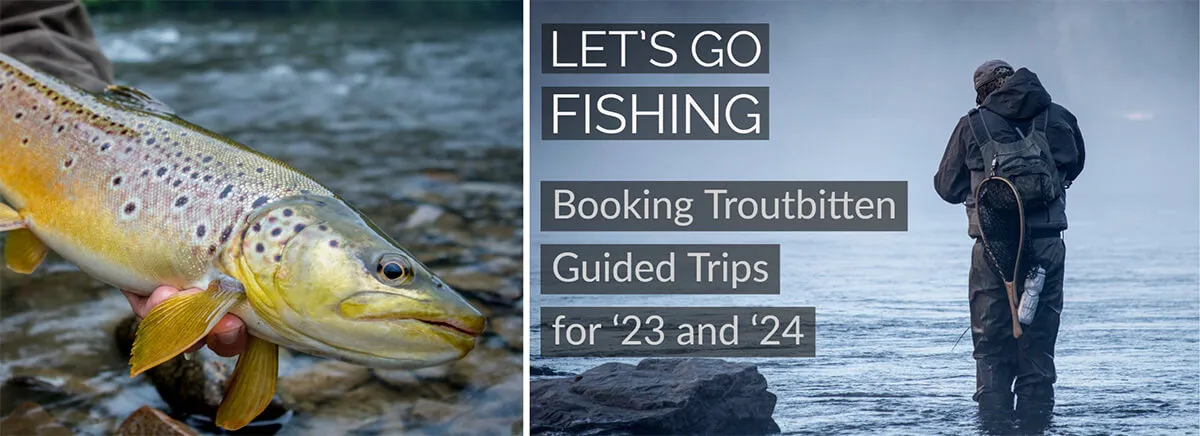
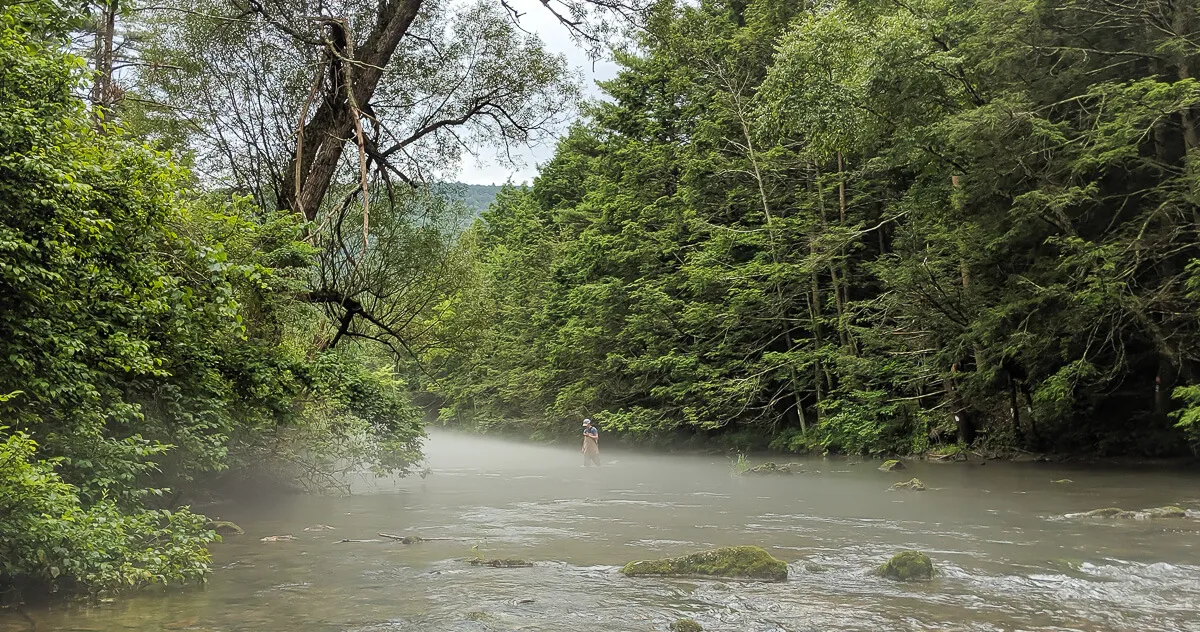
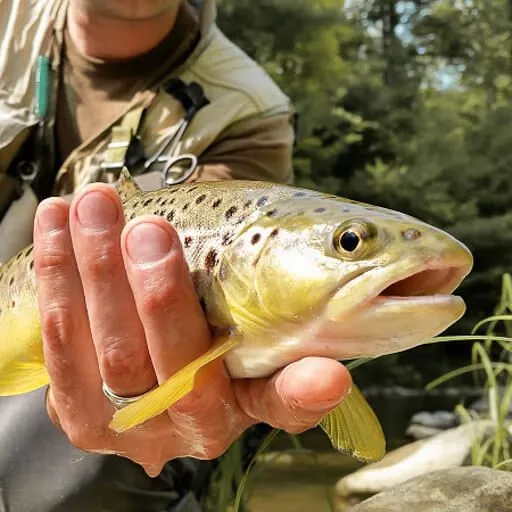
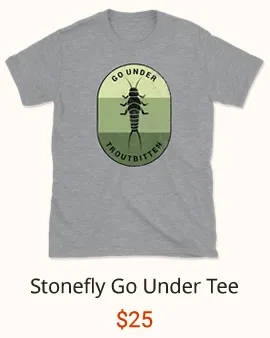

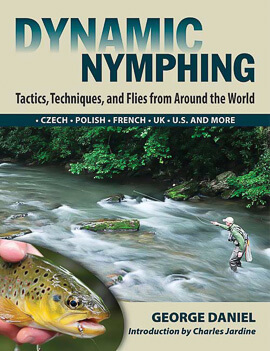
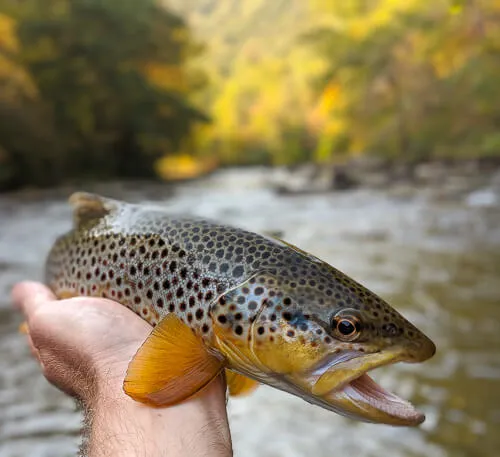
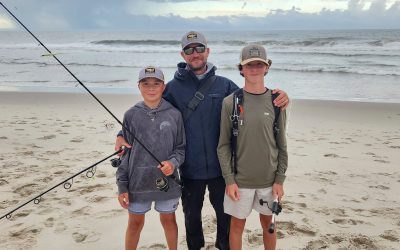
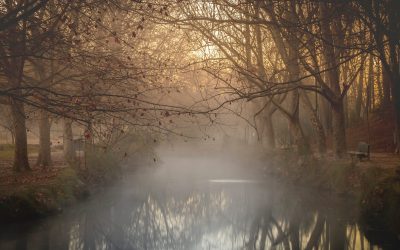
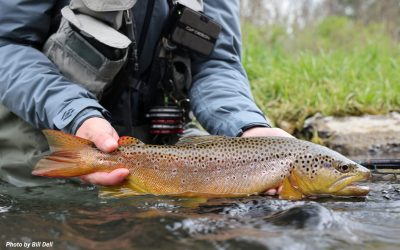
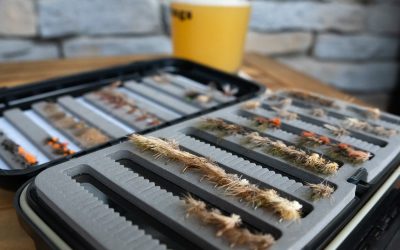
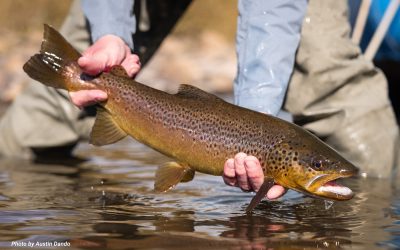
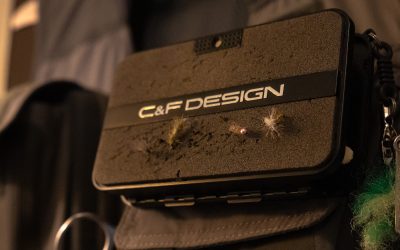

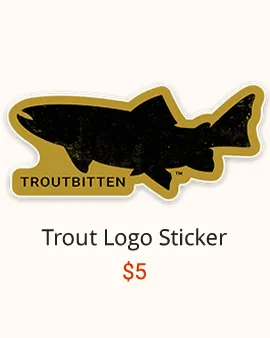
I have a friend who ties flies that are perfect like Lincoln!s. He told me that it’s about doing your best, which he applies to many other areas in his life. It harkens back to when American craftsmanship was among the best in the world.
Great article! As a fly tier I can relate (sort of) to both tiers you reference. I do love tying beautiful flies, and sometimes even manage to turn out something beautiful, but overall I find I have fallen into the category of functional fly tier. There is a certain rush and satisfaction that comes from catching fish on a fly I have constructed (and even more so when friends have good days using my creations) and if the flies are also visually appealing to me, all the better. At the end of the day I just want something the trout will eat, even if I am somewhat unhappy with what comes off my vice from time to time. It takes a special kind of person to only keep a few of the flies they tie (stripping the rest) and an even more special one to tie and not fish at all. They are the source of beautiful flies, however, that keep the bar high for those of who want to create beautiful things from time to time. Thanks for all the great articles!
Very well written Dom. Thanks for the share. As the years go, I feel I spend more time behind the vise than I do in the river. I need to change that as bringing them both together is an art that not many can understand. I know you do. Tight Lines my friend.
Artistry and consistency in fly tying demonstrate a skill level that trout care little about.
Nothing looks more artificial to me than a row of identical, perfectly proportioned (and often overdressed) dry flies. The most important characteristics of an effective dry fly are the most overlooked: profile, posture, floatation, and feel.
Fly design beats artistry every time.
Great thoughts. Most early fly tying efforts produce some ratty looking flies. I’ve certainly tied my share of sorry looking flies, crowded eyes, twisted tails, trapped fibers askew, oh the horror. I still fished them because that was the best I could do at that point and I really wanted to get on the water with flies I tied. Despite their very unartistic appearance, they often caught fish which is always a thrill to catch fish on flies you tied yourself, but their poor appearance still left me a bit unsatisfied. I’ve also tied some I really loved the look of and really wanted them to catch fish and they didn’t (or least the way I fished them that day didn’t). Again, the workmanship of the fly did make me happy, but the lack of fish is always a disappointment. There are some flies that I don’t care that much about, simple flies, zebra midges, Walt’s Worms. But there are others you just want to be right, pheasant tails, GRHE, parachute anything, wet flies, and especially streamers. When I’m lucky enough to find myself at the the confluence of working hard at a fly that is both beautiful and fishes well that’s when I feel the most satisfaction. Loved the article.
For some reason that article resonated with me more than most. One thing that I see declining in our modern world is an appreciation of craftsmanship. Artisans be it painters, woodworkers, brewers or fly tyers that can take it to the next level bring a sense of joy and pride to all those who purchase, admire or participate in whatever the craft is. Its not necessary but it makes our short lives a little more interesting and fun.
Ahh….love it. Maybe my favourite series of articles.
We all frame our game in different ways. Those wafts of string feather and fur are at the core of it.
Timely article, Dom. I mostly just tie flies these days. Life has taken me a long way from the river. My bench is always a mess and the pandemic as brought even more time to tie and learn. I was always a functional tyer, providing flies for most of the people I fish with. Lately, with the proliferation of YouTube, it’s not enough for me to just tie. I’ve learned so much in the last few years that I’m not satisfied with something that’s not quite right…knowing that the fish could care less. Quality has surpassed quantity and it’s extremely satisfying to me to tie flies that not only fish well, but please my eye. There’s a bit of chasing your tail kinda thing that happens. Recently, I’ve been redoing the heads on many of my deer hair flies, sculpins and such. I don’t really know why, they have always been fine and caught plenty of fish. They just look better. It’s a never ending process and that’s fine with me. I love it!
Excellent article. I get great satisfaction when another angler looks at and complements me on my flies. I get greater satisfaction when people report back to me how well the flies I gave them proved effective in their time on the water. You see I don’t very often sell my flies. I know the time I’ve got invested in them and I would have to charge more than anyone would pay for them.
There is something very moving about someone who ties flies for pure aesthetic pleasure, not for utilitarian ends. It’s a bit like a great chef who doesn’t eat his creations. I am not one of these people, but I admire their travels in the realms of gold.
The pinnacle of fly tying is to fuse artistry with functionality. I hear it all the time that you don’t need to spend much time tying to catch fish, and that’s true. But why wouldn’t you tie the best flies you are capable of? An experienced angler will develop an eye for the qualities that make the fly fish properly. Ultimately, artistry versus functionality is a false dichotomy.
“ An experienced angler will develop an eye for the qualities that make the fly fish properly. Ultimately, artistry versus functionality is a false dichotomy.”
It’s surprising and unfortunate that this is no longer common knowledge… The design of the fly and the execution of the craft are necessary in equal measure.
Great stuff, Dom. The article, and the discusion, remind me of Zen and the Art of Motorcycle Repair. Pirsig talks about the idea of quality – quality of engagement, quality of experience, quality of craftmanship, and he suggests THAT is the key to a fulfilled life. I like that idea a lot.
Great writing, Dom. The article, and discussion, remind me of Zen and the Art of Motorcycle Repair. In it, Pirsig talks about quality – quality of engagment, quality of experience, quality of craftmanship, and suggests THAT is the key to a fulfilled life. I like that idea a lot.
Bravo. Great article indeed, there is a nobility in doing something, not (only) because it’s useful or productive, but because it’s beautiful.
New fly-tyer here. I hadn’t thought of stripping soulless flies… or in my case, RS-2s so abominably ugly that Rim Chung would smile as any respectable trout would refuse them. I shall go over to the waste bin and retrieve my little abominations and find a razor.
The article series is killing me! I’ve encountered all of the above profiles over the years. Well done, Dom! Here’s one you’ve got me thinking about – The complete Newbie. You know, the friend of your friend on a long weekend getaway to a hallowed river. He’s the outlier of your well worn circle of fishing’ buds who never fly fished before and you know his impatience will probably make it short-lived. He wants to learn so quickly, everything about fly fishing within 3 days without paying any dues. Curiosity is a thing to be admired most of the time but with the Newbie it can be downright annoying. Question after question can eventually lead to avoidance. The trip’s evening “tie” (not necessarily tying one on) is a great opportunity to take another cleansing sip, grab a fresh chew and insert a new hook in the vise while expounding on the virtues of paying your dues. Earn it and learn it, bro!
I would one day very much like to be a Lincoln. I learned to tie at the same time I learned to flyfish. There’s a deeply gratifying feeling about a ‘tied and caught’ fush. I have been tying only a short while, but recently received my first order. Some beadhead bibios, not the most challenging fly but fairly popular.